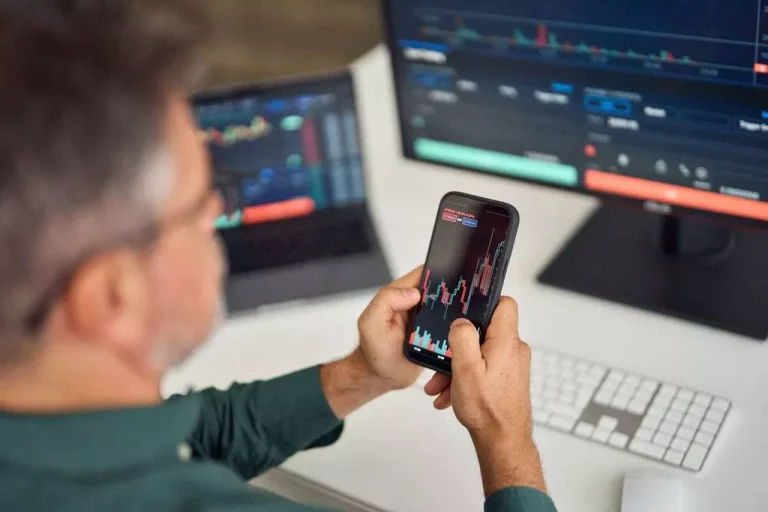Content
This was the platform for the first cryptocurrency and blockchain system, Bitcoin (BTC -1.21%), and it remains in effect today. Blockchains manage a large-scale record of transactions and additional data wrapped in several layers of data security. Hackers use man-in-the-middle attacks to blockchain industry trends place themselves between users and digital wallets. Attackers posing as legitimate nodes can intercept transmissions and change their destination or contents.
An Essential Blockchain Security Guide

Other industry research shows that the number and cost of cyberattacks have increased. As we all know, blockchain is highly decentralized and many security features have also been enhanced, still, it is becoming a challenge to apply the security rules. By integrating cryptographic principles and decentralization, blockchain introduces valuable security enhancements. Nonetheless, Cryptocurrency it’s crucial to acknowledge that blockchain doesn’t automatically ensure complete security. Adhering to relevant regulations and standards ensures security and trust. Maintaining transparency in operations and security practices builds user trust and complies with legal requirements.
Private (and permissioned) blockchains
Accessing and simultaneously modifying every instance (or at least a 51 percent majority) of a specific blockchain would necessitate an enormous quantity of computing power. Uncertainty surrounds the matter of whether this implies that lesser blockchain networks may be susceptible to attack. https://www.xcritical.com/ Regardless, as the size of your network increases, so will the resistance of your blockchain to tampering.
Implement Identity and Access Management (IAM) solutions
The program includes world-class instructions, outcome-centric bootcamps, and hands-on projects and teaches you about Bitcoin, Hyperledger, Ethereum, Ripple, and Multichain blockchain platforms. You will also learn how to set up a private blockchain network using Hyperledger Composer and deploy smart contracts on Ethereum. This US-based defense contractor is the first company of its kind to implement blockchain security.
Regularly audit blockchain networks
This will happen once a lousy actor joins the network and tries to disrupt it. They’ll try this by flooding the network with transactions or making an attempt to reverse valid transactions. But recent work by Sirer and colleagues shows that neither Bitcoin nor Ethereum is as decentralized as you might think. They found that the top four bitcoin-mining operations had more than 53 percent of the system’s average mining capacity per week.
Beyond these core concepts, different blockchains can perform their minting function in many different ways. The original system is known as proof of work, where new data blocks are minted in a process known as mining. Vast numbers of computers and specialized mining systems solve complex mathematical puzzles to earn the right to issue the next data block. NordLayer offers user-friendly solutions that enhance blockchain security by ensuring that only authorized people have access to your blockchain environments. Employees should understand how to restore blockchain networks when emergencies arise.
Consider the following blockchain risks and security issues that can arise, including a few real-world examples of when blockchains were compromised. The U.S. government’s Defense Advanced Research Projects Agency is experimenting with the use of blockchain to create a more secure platform for transmitting messages and processing transactions. This is part of the agency’s efforts to create an unhackable code for the U.S. The technology immediately flags attempts to tamper with data and even provides intelligence on the attacker.
Regularly auditing smart contracts using automated tools and third-party experts is crucial. Employing formal methods to mathematically prove the correctness of smart contracts and following best practices in development, such as minimizing complexity and using well-tested libraries, can prevent vulnerabilities. It’s true that cryptocurrency trading exchanges and digital wallets have been hacked in the past, but that’s a separate issue.

There are currently over 1,000 different types of blockchains available. Satoshi Nakamoto, an anonymous online persona, created Bitcoin and what we know as blockchain. Knowing how to keep yours secure isn’t only a best practice, but imperative. Embrace the ways technology can streamline and safeguard the important parts of our lives — but also be proactive about ensuring it stays that way. The “Sybil” in Sybil attack stems from a fictional book character with dissociative identity disorder. To that tune, Sybil attacks are when cybercriminals overwhelm a network with login attempts or false credentials and cause them to crash.
Techniques like multi-factor authentication and encryption algorithms are commonly used to bolster security. Role-based access can be an effective way to limit the range of actions available to each user. 51% or double-spending attackThis type of attack targets the consensus layer of Proof-of-Work blockchains.
Others see potential in blockchains that require permission to join, unlike in Bitcoin’s case, where anyone who downloads the software can join the network. Such systems are anathema to the anti-hierarchical ethos of cryptocurrencies, but the approach appeals to financial and other institutions looking to exploit the advantages of a shared cryptographic database. Another area where blockchain technology is advancing significantly is supply chain management. Companies can trace and verify the origin, validity, and movement of items along the supply chain by utilising blockchain’s transparent and irreversible characteristics. As a result, the risks of product fraud are reduced, consumer confidence is increased, and product integrity is guaranteed.
Once one page is full, you must flip to the next blank page to continue recording information, and so on. In the case of a blockchain, once a block is filled and locked into the chain, that block can no longer be changed. A database with an essentially impenetrable cybersecurity structure would be pretty handy, right? You might compare the database to a house of playing cards where if you tamper with one card, the whole structure will tumble.
- The attacker separates this pool from the original ledger, creating a second parallel blockchain.
- As a result, there are two forms of labeling for blockchain networks i.e., Public and Private networks.
- One notable example is an exploit on a popular Solana mobile wallet Slope, enabling an attacker to steal over $8M worth of SOL.
- Only members with special access and permissions can maintain the transaction ledger.
Lockheed Martin is working with the cybersecurity firm Guardtime Federal to institute blockchain cybersecurity protocols in engineering systems, software development, and supply chain risk management. Lockheed Martin’s goal is to use blockchain to protect every step of its weapon development systems. Users must be validated by either the network’s central administrator or starter or by a rule set put in place by the network’s administrator.
Securing a private blockchain is the sole responsibility of the operating entity. The centralized nature of these blockchains means that there is a single point of failure, making it crucial for the institution to implement strong security measures. Blockchain security is a comprehensive risk management system for a blockchain network. It uses cybersecurity frameworks, assurance services and best practices to reduce risks against attacks and fraud. The decentralized nature of public blockchains allows for transparency and immutability, but it also makes it vulnerable to 51% attacks, where an attacker gains majority control of the network’s hashing power.
Response plans may include upgradeability measures to fix vulnerabilities without compromising blockchain availability. Follow the best practices below to benefit from blockchain technology and ensure secure transactions. Smart contracts are becoming increasingly popular but can also be risky. Developers build these self-executing contracts into blockchain operations. When two users meet pre-defined conditions, the contract processes their transaction. Digital signatures based on this key verify interactions with the blockchain ledger.
